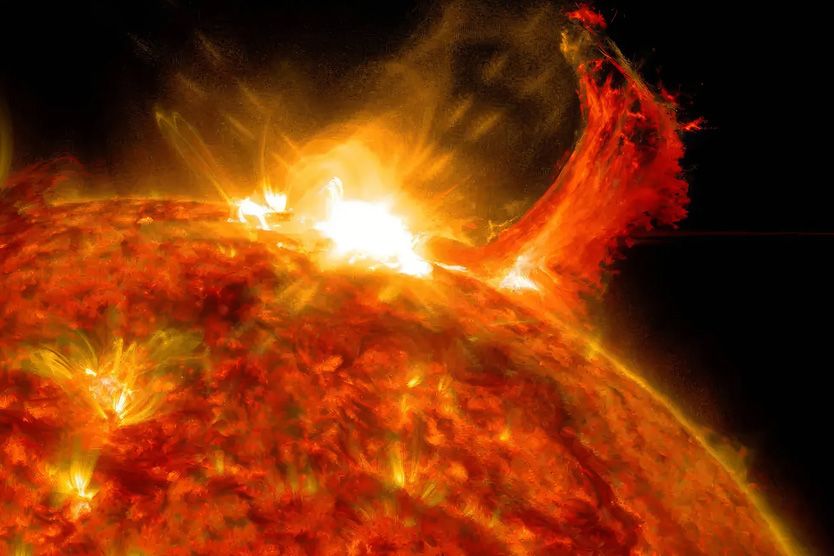The deterioration of the geomagnetic environment is expected to begin overnight on August 7, and by around 7:00 Moscow time on August 8, the plasma cloud ejected by the Sun will reach Earth.
When the plasma impacts the planet, the geomagnetic index Kp is expected to rise to 6. This is the highest value since June 13. On the space weather scale, such events are considered moderate in scale. However, they may affect power systems in high latitudes, influence radio wave propagation, and cause errors in orbital spacecraft drift calculations.
Even before the arrival of the plasma cloud, Earth will enter the influence zone of another large coronal hole. This will lead to a sharp deterioration in the geomagnetic background for nearly a week.
The M4.4-class solar flare that occurred on August 5 was initially expected to have lesser consequences than currently predicted. The plasma cloud was ejected at a 45-degree angle, so scientists believed the impact would either not occur at all or only the outer, less dense regions of the ejected solar matter would reach Earth.
Later recalculations showed that the planet will be grazed by the high-speed core of the cloud, making the impact significantly stronger. However, a storm may not occur if the trajectory of the ejected plasma deviates by 3–5 degrees from the calculations.
It was also noted that during such storms, auroras may be visible. They are typically observed at latitudes up to 60 degrees but sometimes descend as low as 50 degrees.






